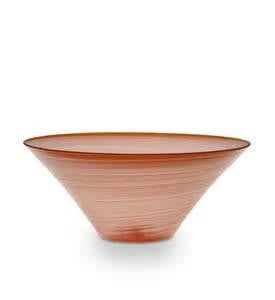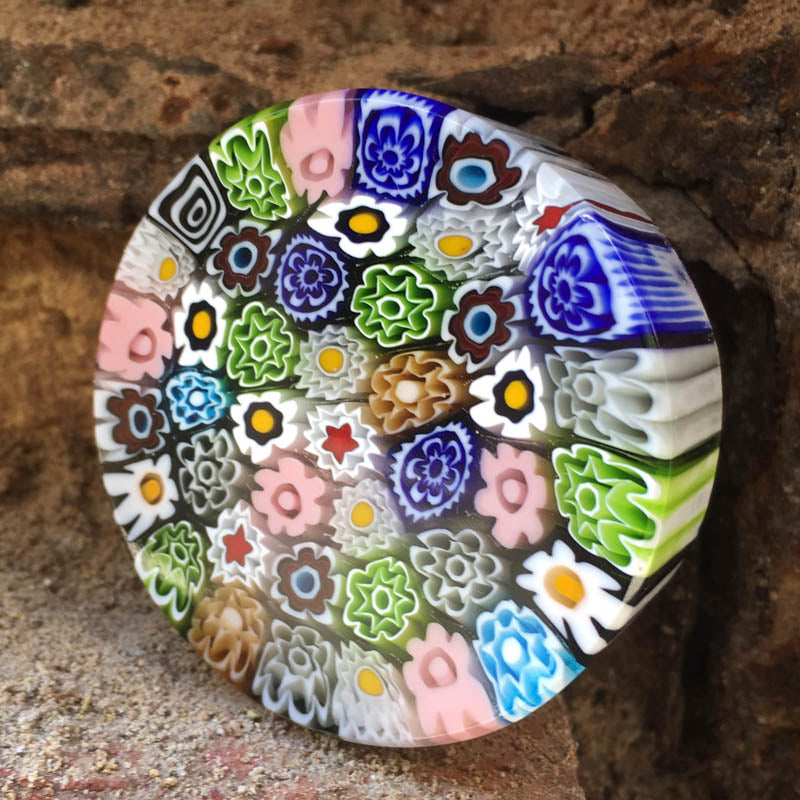Literally Half filigree . Decoration consisting on fine, parallel, coloured threads between layers of crystal. In order to achieve the desired fineness, the vessel to be decorated thus is made of preformed tubes created through extreme stretching of a canna body as a applicazione a caldo inclusion.
The cylinder is then given the desired shape and twisted during glassblowing.
By revisiting the ancient half-filigree (mezza filigrana) technique, already in use in the 16th century, Carlo Scarpa designed a refined series of glass pieces, which was presented at the Venice Biennale in 1934.
At the following Biennale (1936), other variants were exhibited: filigrana ondulata cristallo lattimo and “variegata bruno”. Some of these, such as the filigrana variegata marino, were on display at the 6th Triennale the same year. Half-filigree glass features an extremely thin and clear texture, made of a series of clear glass rods with at their centre a piece of lattimo or coloured glass.
During the manufacturing process the rods are fire-joined in a furnace at 700 degrees Celsius. The glass slab thereby obtained is shaped into a cylinder which is modeled with a blowpipe by the glassmaker to attain the designed shape.



Hinterlasse einen Kommentar
Alle Kommentare werden vor der Veröffentlichung geprüft.
Diese Website ist durch hCaptcha geschützt und es gelten die allgemeinen Geschäftsbedingungen und Datenschutzbestimmungen von hCaptcha.